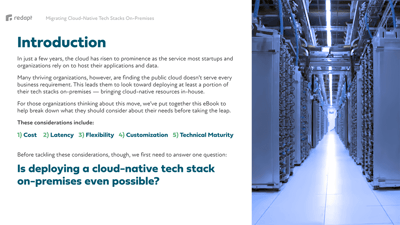Cloud native, an approach to building and running applications that exploits the advantages of the cloud computing delivery model, is quickly gaining ground among enterprises looking to adopt the development innovations of Silicon Valley giants.
We covered key steps to going cloud native in an earlier post, but for those just getting started with the concept, here's a brief timeline of events that proved crucial to the rise of cloud-native applications.
2000: Jails is added to FreeBSD
Jails is an early implementation of container technology. And application containers play a critical role in cloud-native development.
Now ubiquitous in cloud environments, container technology goes back to the 1970s. That said, the addition of "jails" to the open-source operating system FreeBSD in 2000 was a pivotal development that sparked a renewed interest in containers and their vast potential for modern application practices.
2003 - 2004: Google's Borg system is born
Today, Kubernetes plays a major role in a cloud-native framework as the dominate container orchestrator.
K8s (as it's often abbreviated) originated with Google's Borg system and was the search giant's advanced and closely guarded data center management system that was extremely efficient at orchestrating tasks across thousands of machines to run Google Search, Gmail, Google Maps and other services.
2007 - 2008: The initial concept of DevOps conceived by Patrick Debois
The DevOps methodology typically goes hand in hand with cloud native. The origins of DevOps have been traced to Belgian consultant, project manager, and agile practitioner, Patrick Debois.
The idea took shape at the 2008 Agile Conference in Toronto in a breakout session between Debois and software developer Andrew Shafer, sparking the development of the core tenets of DevOps.
2011: The Twelve-Factor App principles are developed
Published by engineers at the platform-as-a-service provider (PaaS), Heroku, the Twelve-Factor App principles have proved to be an enduring set of best practices for building modern, cloud-native applications.
The Twelve-Factor App continues to be one of the most critical documents for anyone involved in developing apps in the cloud era.
2013: Container software Docker is released
Docker, the contemporary platform largely responsible for reigniting interest in the potential of container technology, made it much easier to build, ship, and run applications across servers and computing environments.
Since Docker's 2013 open-source release, it's estimated that about half of the industry has adopted its technologies.
2014: Google introduces open-source Kubernetes
Though Borg was a well-kept secret within the walls of Google for the better part of a decade, it was eventually released to the public as open-source Kubernetes in 2014 - bringing the now dominant container orchestrator to the masses.
The introduction of Kubernetes turbo-charged the adoption rates of containers and cloud-native practices by enabling container management at scale.
2015: Cloud Native Computing Foundation is launched
In the summer of 2015, Google, IBM, Intel, VMware, and other tech industry leaders joined forces to create the Cloud Native Computing Foundation (CNCF) to steer the direction of Kubernetes, and how distributed, scale-out applications are built and supported.
The creation of the CNCF further solidified cloud native as the standard model for future applications.
2017: The Cloud Foundry Foundation opens project Kubo
Project Kubo, jointly developed by Pivotal, VMware, and Google, merged the release of engineering, deployment, and lifecycle management capabilities of Pivotal's BOSH to Kubernetes clusters — a significant milestone for the advancement of containers and cloud native.
2018: Pivotal Container Service is released
Following closely on the heels of Kubo, this year's release of Pivotal Container Service (PKS) marked a game change in the viability of Kubernetes, containers, and by extension, cloud native in enterprises where infrastructure stability and security considerations have impeded adoption.
Dive deeper: check out our Ultimate Guide to Building and Deploying Cloud Native Solutions On-Premises to better understand how a modern datacenter allows you to better tap into your enterprise's data.
Categories
- Cloud Migration and Adoption
- Enterprise IT and Infrastructure
- Artificial Intelligence and Machine Learning
- Data Management and Analytics
- DevOps and Automation
- Cybersecurity and Compliance
- Application Modernization and Optimization
- Featured
- Managed Services & Cloud Cost Optimization
- News
- Workplace Modernization
- Tech We Like
- AWS
- Social Good News
- Cost Optimization
- Hybrid Cloud Strategy
- NVIDIA
- Application Development
- GPU










